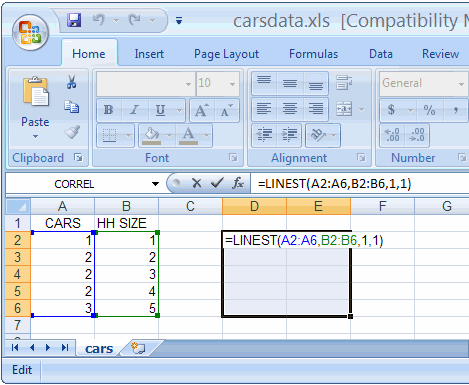

The line- and curve-fitting functions LINEST and LOGEST can calculate the best straight line or exponential curve that fits your data.Where x and y are sample means, i.e., x = AVERAGE(known x's) and y = AVERAGE(known_y's).

When you have only one independent x-variable, the calculations for m and b are based on the following formulas: LINEST uses the method of least squares for determining the best fit for the data. The more linear the data, the more accurate the LINEST model.

For information about how df is calculated, see "Remarks" later in this topic. Compare the values you find in the table to the F statistic returned by LINEST to determine a confidence level for the model. Use the degrees of freedom to help you find F-critical values in a statistical table. Use the F statistic to determine whether the observed relationship between the dependent and independent variables occurs by chance. The F statistic, or the F-observed value. For information about how r2 is calculated, see "Remarks" later in this topic. At the other extreme, if the coefficient of determination is 0, the regression equation is not helpful in predicting a y-value. If it is 1, there is a perfect correlation in the sample - there is no difference between the estimated y-value and the actual y-value. Compares estimated and actual y-values, and ranges in value from 0 to 1. The standard error value for the constant b (seb = #N/A when const is FALSE). The standard error values for the coefficients m1,m2.,mn. The additional regression statistics are as follows. If stats is FALSE or omitted, LINEST returns only the m-coefficients and the constant b. The m-values are coefficients corresponding to each x-value, and b is a constant value. Where the dependent y-value is a function of the independent x-values. + b (if there are multiple ranges of x-values) Because this function returns an array of values, it must be entered as an array formula. Calculates the statistics for a line by using the "least squares" method to calculate a straight line that best fits your data, and returns an array that describes the line.


 0 kommentar(er)
0 kommentar(er)
